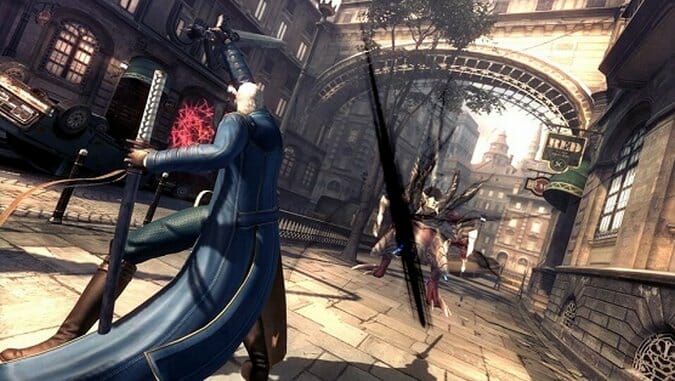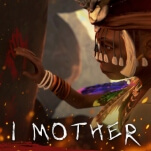Devil May Cry 4: Special Edition—This is Sparda

Devil May Cry is a beleaguered series. With the first game fourteen years ago, it essentially launched the genre of character action games into the public consciousness through its stylish combat and unforgiving difficulty. Then it stumbled as many times as it succeeded, occasionally trying to reinvent itself and causing a schism between fans over what properly defines the series. Playing through the games sequentially might leave any new fan scratching their head in confusion across every major revamp, forcing Capcom into a defensive stance with Devil May Cry 4: Special Edition, an HD remaster that was made before the reboot and is releasing after the remaster of said reboot. Like I said, it’s confusing.
I am actually not sure that “remaster” is the proper terminology for Devil May Cry 4: Special Edition, though the word already lacks proper definition. Some games adopting the remastered moniker have improved textures, improved lightning, run at higher frame rates, while others up the resolution and simply include all the available DLC. Special Edition charts a middle path, not offering many visual frills to take advantage of the PlayStation 4 and Xbox One hardware, but adding new playable characters, extra modes and a few new costumes. I ended up settling on the term “refurbished” rather than “remastered.”
If you’re new to Devil May Cry 4, or to the series as a whole, you may have caught wind of this game’s less-than-stellar reputation in the last seven years since its release. With two systems to support and more high-quality art assets to generate than ever before, Capcom decided to split the baby and force players to play half a game twice in succession. The plot of Devil May Cry 4 is best summarized as Nero, a new character, running to one end of the country and Dante, the returning protagonist, running back to the other end. The same bosses, the same levels in reverse, a few extra wise-ass remarks, eventually even the most excited player will feel bogged down in the repetitive nature of it. If you are coming to Devil May Cry 4 for a one-and-done romp through the story, you are going to come away extremely disappointed.
That is not how I expect seasoned players to approach Special Edition, however. With character action games in general, the actual act of progressing through the campaign is considered more tutorial than endgame. They are built on the assumption that a player’s default difficulty is merely familiarizing themselves with the game before leaping into more challenging modes and fighting more aggressive enemies. You don’t play Devil May Cry 4 to finish, you play it to become skilled at fighting enemies, and the ensuing fun from SSS-ranking a room full of them. New players might be caught off guard and unsatisfied by a single jaunt through the game, especially if they have no plans to take it further.
The main campaign is still left relatively untouched except for a few balance changes to Dante and Nero that get into a level of granularity that is only barely noticeable. You still go through the same game, still do the same interminable platforming sequences, play the same dumb dice game, and everything is as it was years ago. The story is left intact, so lore fanatics desperate to see confirmation that Nero is Dante’s nephew will have to wait until a new game for answers. If you have played this title before and are hoping for improvements to fix the problems it had in 2008, Capcom did not grant your wish.
The actual headliners for this updated version are the new playable characters, appending three very different play styles to the game’s original two. Vergil, Dante’s brother who seemingly died in the prequel Devil May Cry 3, is given an opening cutscene establishing that his campaign takes place decades before Devil May Cry 4. Despite this establishment, Vergil still fights the same bosses, including people who should not have been born yet, and runs to one end of the country only to immediately turn around and run back. He is exceedingly capable, however, to the point where I am unsure that he does not completely unbalance the game, as many bosses simply have no counter for his warps and combos.
-

-

-

-

-

-

-

-

-

-

-

-

-

-

-

-

-

-

-

-

-

-

-

-

-

-

-

-

-

-

-

-

-

-

-

-

-

-

-

-









































